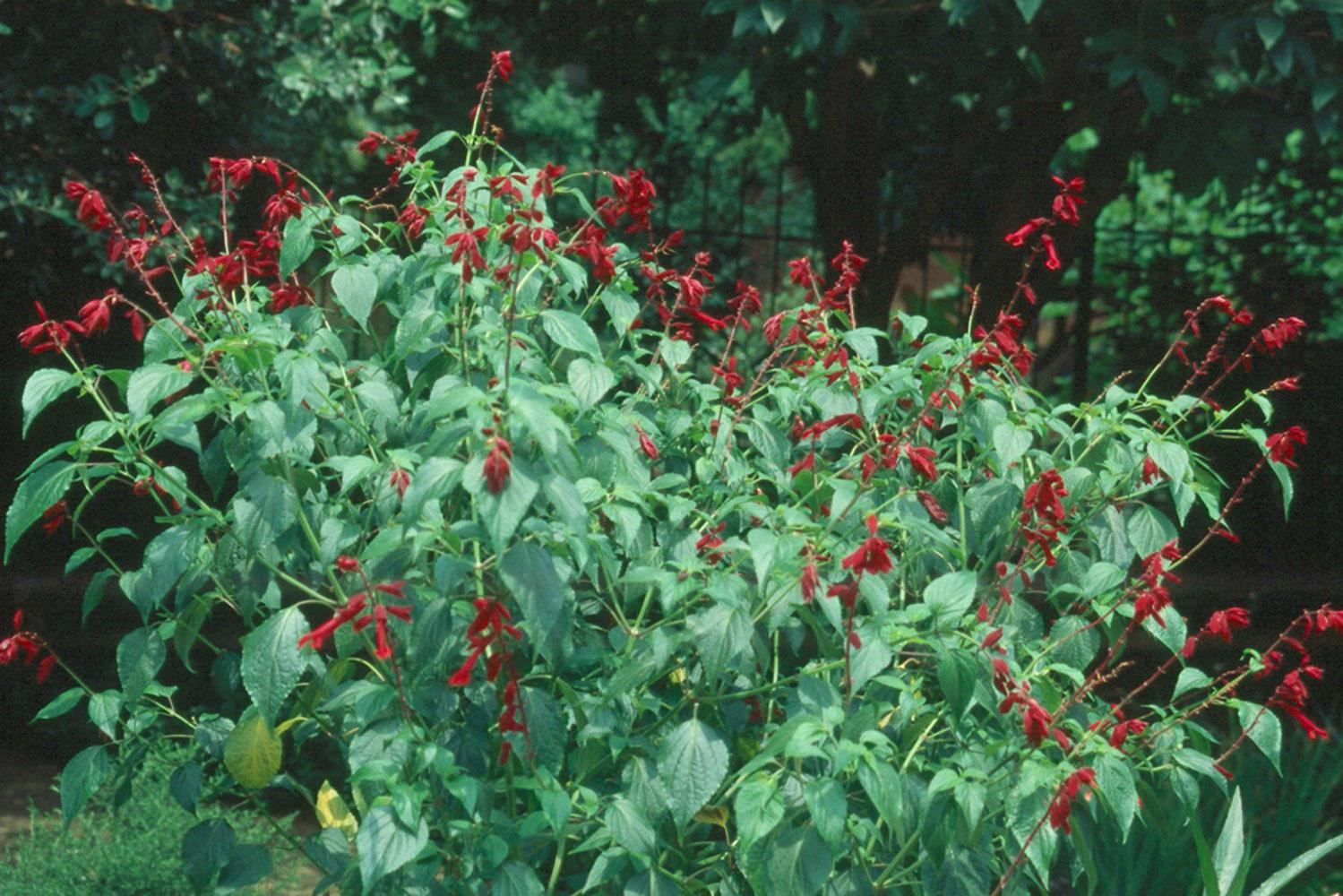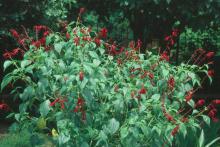Information Possibly Outdated
The information presented on this page was originally released on August 5, 2002. It may not be outdated, but please search our site for more current information. If you plan to quote or reference this information in a publication, please check with the Extension specialist or author before proceeding.
Salvia van houttei attracts admirers
By Norman Winter
MSU Horticulturist
Central Mississippi Research & Extension Center
They say, "seeing is believing," but in the case of Salvia van houttei, seeing is wanting, whether you are a hungry hummingbird or a gardener with an eye for color.
If the wine sage had no other attributes, it at least causes taxonomic discussions over what it really is. Some say it is Salvia van houttei, giving it species status. Others say it is one of the first selections of the wild Salvia splendens, the different plant we call scarlet sage or annual salvia. Gardeners who see Salvia van houttei just say, "I've got to have it."
Whether or not this South American native is perennial or annual is another fight altogether. Most consider it perennial in zone 8 and higher and worthy as an annual elsewhere. Everyone who sees it will want the 4-foot by 4-foot plant that is loaded with spiky, burgundy wine colored flowers from spring through frost.
The darting ruby throated hummingbird will find these as much of a delicacy as the other salvias and will feed often.
Oddly, this relatively new and unknown plant showed up in several Mississippi garden centers this spring. They most likely are long gone now but are worth getting when the opportunity arises. Mark your 2003 calendars for next spring, so you won't forget to ask for these jewels.
The ideal site would be morning sun and afternoon shade. Plant on well-drained, raised beds or amend heavy soils with the addition of compost or humus. Remember that with many plants, it is not the cold that takes them out in the winter, but cold coupled with soggy conditions that seals their doom. Well-drained soil may encourage it to return further north than expected.
While preparing the soil, incorporate 2 pounds of a slow-release, 12-6-6 per 100 square feet of bed space. Space the plants 18 to 24-inches apart, planting at the same depth they are growing in the container. Apply a good layer of mulch after planting.
Water the salvia to get it established and also during long, dry periods. Much of the state has had plenty of rainfall this summer that has been just about perfect for all sorts of plants, provided the drainage was good. Once the plant has received significant frost damage in the fall, prune to ground level and add a layer of mulch for winter protection.
With the emergence of growth next spring, feed with a light application of the fertilizer and every six to eight weeks through September. Keep the flowers deadheaded, and give the plant a light shearing if needed to maintain bushiness.
If you have some now, take a few cuttings in the fall to easily overwinter just in case there is not a spring return. You also can divide with the emergence of spring growth.
The Salvia van houttei really looks best with afternoon shade protection. The deep burgundy wine color is exceptional with the yellow gold from Early Sunrise coreopsis, New Gold lantana, as well as rudbeckias like Indian Summer or Goldsturm. Try it also with white flowers like ox-eye or Shasta daisies.
The wine sage is usually sold as Salvia van houttei, and it will most likely not look overly impressive when it is small and in container at the garden center. But, my goodness, what a looker it turns out to be as it grows to its full potential. You'll love it!



